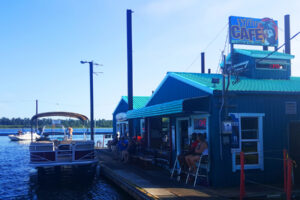RKm Development, the Portland-based company hired by the Port of Camas-Washougal to build and construct the Hyas Point mixed-use development along the Washougal waterfront, is ready to put shovels into the ground.
The Port has to resolve one final unexpected situation, however, before the first phase of the construction project can begin.
The public agency has contracted with Washougal-based Swafford Excavating to remove 10,000 cubic yards of buried organic material from a portion of the development site.
“That’s basically our last hurdle before development can start on the property,” Port Commissioner John Spencer said during a Commission meeting held June 18. “We’re champing at the bit to have this done, and very, very excited.”
The material — consisting mainly of wood chips — was buried by employees at Hambleton’s Lumber sawmill, which closed in 2010, after the Port purchased the property.




